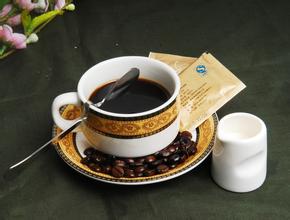Introduction to the Regional treatment Grinding scale of Honduran Coffee Kaddura Manor
Introduction to the Regional treatment Grinding scale of Honduran Coffee Kaddura Manor
This batch of Holy Rose processing Plant (Beneficio Santa Rosa), from the Holy Rose place in the western province of Columbine, is a small cooperative of the local community, established in 2005 and supported by a non-profit organization, TechnoServe, to provide production technology and poverty eradication. The cooperative established a Mejoramiento Agra í cola Sostenible (MAS) assistance program to support 6000 families of small coffee farmers and provide technical assistance with the aim of producing high quality coffee beans. Coffee is planted from 1500 to 2000 meters above sea level. The main varieties of coffee are Caturra, Catuai, Bourbon and Pacas and Typica. Flavor reference: sweet, cream, brown sugar, melon sweet, mint, caramel milk. The acidity of the fruit is not obvious, it is layered and has a strong sweet taste of caramel. The aroma is harmonious, the flavor is rich, the flavor is sweet, warm and smooth rainforest alliance RFA (Rainforest Alliance) certification
Is a non-profit international non-governmental environmental protection organization whose mission is to protect the global ecosystem and the human and wildlife that make a living by changing land use patterns, business and consumer behavior.
Although there are no distinct characteristics of Honduran coffee, its biggest feature is its rich and balanced taste as a whole. In detail, it has a medium or shallow acidity, which is obvious but not strong. Sometimes with a slight floral or fruity aroma (generally speaking, different producing areas, different elevations of beans have different flavor performance) slightly bitter and obvious sweet. The overall taste of Honduras is balanced, sour and bitter are not strong, and the balance between the two is better. Therefore, the extremely balanced nature of Honduran coffee makes it widely used. It can not only be used to prepare mixed coffee, but also can be used as a single product to brew it. With Honduran coffee mixed with Italian concentrate, there will be a commendable flavor in Honduras. Coffee producing areas are divided into six major producing areas, covering the west and south, namely, Santa Barbara, El Paraiso, Copan, La Paz, Comayagua and Olancho. The average planting height is more than 1100 meters above sea level. Coffee varieties are Arabica, 69% are HG "High and low Coffee", 12% are SHG "Special Highland Coffee" and 19% are CS. There are mainly Typic, Bourbon, Caturra, Villa Sarch and Lempira.
High-quality coffee in Honduras uses water washing to deal with coffee beans, usually after soaking, when the defective fruit will surface, it can be discarded first. Then put the good fruit into the fruit peeling machine and peel off the peel with the rotating force of the machine. Peeled fruits are screened by machines to select fruits of high quality. Usually the bigger the fruit, the better the maturity. Coffee in Honduras is dried in the sun, so there is always a hint of fruity in the taste.

Important Notice :
前街咖啡 FrontStreet Coffee has moved to new addredd:
FrontStreet Coffee Address: 315,Donghua East Road,GuangZhou
Tel:020 38364473
- Prev

Introduction to the taste of grinding scale varieties by describing the characteristic flavor of Colombian coffee
Colombian coffee characteristic flavor description method grinding scale variety taste introduction Colombian coffee beans mature in the coffee world will have the reputation of flawless and elegant as jadeite in the jade world, with heavy particles, rich nutrition, rich flavor, soft taste, smooth taste and excellent balance; the color is as clear and transparent as emerald emerald; until
- Next

Varieties of Ethiopian coffee beans taste of manor region flavor description method grinding engraving degree introduction
The main producing areas of Ethiopian coffee are Harald in the east, Djimmah in the southwest and Sidamo in the south. Yirgacheffe, with its unique aroma, comes from the northwest of Sidamo province.
Related
- Detailed explanation of Jadeite planting Land in Panamanian Jadeite Manor introduction to the grading system of Jadeite competitive bidding, Red bid, Green bid and Rose Summer
- Story of Coffee planting in Brenka region of Costa Rica Stonehenge Manor anaerobic heavy honey treatment of flavor mouth
- What's on the barrel of Blue Mountain Coffee beans?
- Can American coffee also pull flowers? How to use hot American style to pull out a good-looking pattern?
- Can you make a cold extract with coffee beans? What is the right proportion for cold-extracted coffee formula?
- Indonesian PWN Gold Mandrine Coffee Origin Features Flavor How to Chong? Mandolin coffee is American.
- A brief introduction to the flavor characteristics of Brazilian yellow bourbon coffee beans
- What is the effect of different water quality on the flavor of cold-extracted coffee? What kind of water is best for brewing coffee?
- Why do you think of Rose Summer whenever you mention Panamanian coffee?
- Introduction to the characteristics of authentic blue mountain coffee bean producing areas? What is the CIB Coffee Authority in Jamaica?

